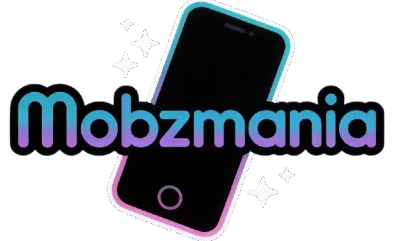Technology has become the heartbeat of modern life. From smartphones that connect us instantly to AI systems that predict our next move, it influences nearly every choice we make. For Americans, technology is both a blessing and a burden — it fuels innovation and convenience, yet it also brings challenges that test our ethics and emotional balance. This article explores Technology: The Good The Bad The Ugly, helping readers see how digital progress shapes our everyday lives and how we can live wisely within it.
Getting the Most Out of Our Tech Tools
Technology has transformed how we work, learn, and connect. From remote work platforms to wearable health trackers, tech tools help us live smarter and faster. In the United States, people use these tools to save time, boost efficiency, and stay connected with family and colleagues across the world. Still, getting the most out of our tech tools requires more than just owning them — it means using them intentionally.
Imagine a busy professional using AI-powered scheduling software to manage tasks, while a student learns through virtual classrooms that make education accessible anywhere. These are positive examples, but they also show a subtle truth: our dependence on technology is growing. To keep the benefits without being consumed by screens, it’s essential to develop healthy digital habits. Taking short breaks, limiting screen time, and setting device-free hours at home are simple yet powerful ways to balance connectivity and calm.
Making Technology Work for You
The secret to making technology work for you lies in mindful use. Think of it as owning a car: you need to drive it, not let it drive you. Smart apps, cloud tools, and automation software can save time and energy, but only when used thoughtfully. Americans now use apps that track sleep, manage finances, and guide meditation — all helpful innovations when used wisely. Yet overreliance can dull creativity and personal connection. Living with intention allows people to enjoy progress without losing authenticity.
The Good
There’s no denying that technology has made life more convenient and interconnected than ever. It powers hospitals, classrooms, businesses, and even farms. The United States thrives on technological innovation — from Silicon Valley breakthroughs to space exploration projects at NASA. Each invention has one thing in common: the goal of improving lives.
The positive side of Technology: The Good The Bad The Ugly becomes clear when we examine how have technological advancements positively impacted our lives. Modern healthcare now includes telemedicine, AI diagnostics, and robotic surgeries that save lives daily. Education, too, has shifted from chalkboards to digital platforms, allowing students from rural areas to access world-class learning resources. In business, remote collaboration tools enable employees to work from anywhere, giving rise to flexible lifestyles and stronger family bonds. Even the environment benefits — renewable energy, electric vehicles, and smart waste management are helping reduce carbon footprints.
| Aspect | Old Way | New Way (Technology Enhanced) |
| Communication | Landlines and letters | Smartphones, instant messaging, video calls |
| Healthcare | In-person visits only | Telemedicine and wearable health devices |
| Education | Physical classrooms | Online courses and digital libraries |
| Business | Office-based work | Remote work and cloud collaboration |
| Environment | High emissions energy | Solar, wind, and electric innovations |
Technology gives us control, knowledge, and speed — three things that make modern living efficient. It enables small startups to compete with global giants, empowers scientists to fight climate change, and allows families to stay connected even when miles apart.
How Have Technological Advancements Positively Impacted Our Lives?
Every major advancement tells a story of hope and human progress. Artificial intelligence has improved logistics, healthcare, and security. The Internet of Things (IoT) connects homes and cities, making them more efficient. Cloud computing lets small businesses grow without heavy infrastructure costs. Technology has also fueled creativity: digital artists, content creators, and entrepreneurs now reach audiences worldwide from a single laptop.
As one American researcher once said, “Technology is not just a tool; it’s a bridge between ideas and action.” This bridge continues to expand, giving us endless possibilities to innovate, learn, and connect.
The Bad
Yet even the most powerful tools can backfire. The darker side of Technology: The Good The Bad The Ugly lies in overuse, privacy breaches, and emotional exhaustion. As technology advances, so do the risks — misinformation spreads faster, cyberattacks grow more complex, and social isolation deepens. The average American spends over seven hours a day on screens, often leading to sleep problems and reduced focus.
Privacy concerns are growing, too. Every online purchase, search, or post leaves a digital footprint. Major data breaches in recent years have exposed personal information of millions. Many feel constant anxiety about who’s watching or collecting their data. Misinformation and fake news also dominate social media platforms, shaping public opinion and deepening social divisions.
Technology’s Hidden Costs
The hidden costs of innovation are often emotional rather than financial. People find themselves disconnected from real experiences as they scroll endlessly through feeds. Children prefer gaming to outdoor play. Workers feel pressure to stay online even after hours, erasing the boundary between job and home life.
According to a Pew Research Center report, nearly 64% of Americans believe technology companies have too much power over personal data. This reveals a growing distrust that could reshape how we engage with digital platforms in the future. The convenience we once celebrated is now being questioned — are we truly in control of our devices, or are they controlling us?
The Ugly
The “ugly” in Technology: The Good The Bad The Ugly exposes the darker edge of progress — one filled with manipulation, exploitation, and moral dilemmas. Cybercrime has become a multi-billion-dollar industry, targeting individuals, companies, and even governments. Artificial intelligence, though brilliant, raises ethical concerns about surveillance, job displacement, and bias in decision-making systems. Deepfakes and online harassment challenge our sense of truth and safety.
Social media platforms, built to connect, often divide instead. Algorithms reward outrage more than empathy, spreading hate and misinformation faster than ever. Online anonymity sometimes fuels cruelty, while overexposure to digital perfection damages mental health, especially among teenagers.
When Technology Turns Against Us
Real-world incidents reveal just how dangerous uncontrolled technology can become. Identity theft, ransomware attacks, and privacy leaks have affected millions. The Cambridge Analytica scandal showed how personal data could manipulate democratic elections. Deepfake videos threaten trust in visual evidence. Even smart home devices have been hacked, turning convenience into vulnerability.
The moral question remains: how far should innovation go before ethics catch up? Technology without accountability can easily shift from helper to harm, blurring the line between advancement and exploitation.
How To Live a Balanced Life with Technology
Living in a digital age doesn’t mean surrendering to screens. The goal is not to abandon technology but to build harmony between online and offline worlds. True progress comes when humans control tech, not the other way around. Americans are learning that mindfulness applies as much to digital use as it does to diet or exercise.
To live a balanced life with technology, individuals can start by setting small, consistent boundaries. Establish device-free zones at home. Schedule “digital detox” weekends. Use apps that track screen time and remind you to take breaks. Focus on offline hobbies — reading, gardening, hiking — to reconnect with the physical world. Parents can lead by example, creating family rules that encourage more conversation and less scrolling.
Practical Steps Toward Digital Balance
Living balanced doesn’t mean rejecting progress; it means choosing how to interact with it. Developing self-awareness is key. Ask yourself: “Is this tool helping me grow or distracting me?” Simple choices — like disabling unnecessary notifications or spending the first hour of your day tech-free — can dramatically improve mental clarity. Professionals can also benefit from time-blocking methods, dedicating specific hours for work, rest, and digital-free reflection.
A healthy relationship with technology is built on control, consciousness, and compassion. When we master these, tech becomes an empowering companion rather than a silent master.
May Also Read: How to Convert AI Photos into Videos on Mobile and PC
Conclusion
Technology will always be both hero and villain — inspiring wonder and caution in equal measure. The real challenge is not to choose sides but to understand its complexity. The story of Technology: The Good The Bad The Ugly reminds us that innovation carries responsibility. When used with awareness, technology enhances human potential; when abused, it undermines it.
To move forward, we must aim for balance — embracing the good, addressing the bad, and confronting the ugly with wisdom. The future depends on how consciously we use the power in our hands. As one technology thinker put it, “The tools we create end up creating us.” The question now is, what kind of future will we choose to create?


